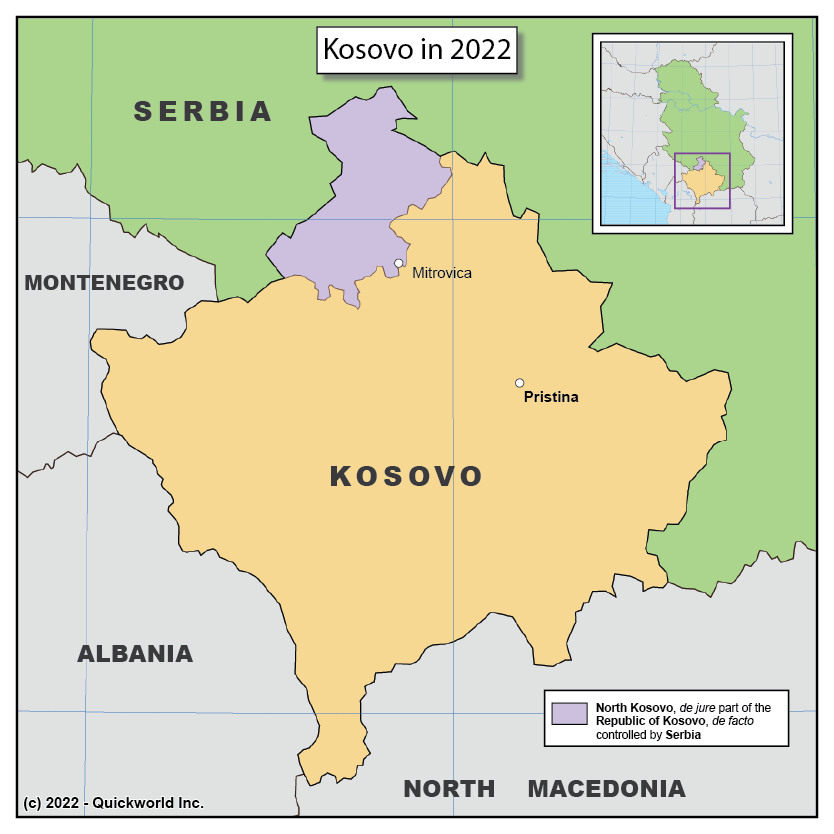Our series on secessions takes us to Kosovo, a territory that unilaterally seceded from Serbia in 2008, although its sovereignty is not accepted by Serbia as of 2022. The United Nations do not recognize this independence, and the World's countries are split on this issue, with 93 countries out of 193 voting to recognize this independence in the UN's General Assembly.
The history of Kosovo is one of tension between two ethnic groups, the Serbs and the Albanians. A third group, the Turks, have also played a major role in this conflict. In particular, it is during the times of Turkish administration that the majority of Albanians converted to Islam, while the Serbs in their vast majority remained Orthodox Christians.
Kosovo is part of the heartland of Serbia, and it fell under Ottoman control in the fourteenth Century. While the Northern part of Serbia regained independence in 1878, Kosovo was reunited with Serbia in 1912, after the Balkan Wars. By then, the population was very mixed between Albanians and Serbs. After the WW2 period, which saw Italy and Germany exercise control over the Western Balkans, Kosovo was again reunited with Serbia, this time as part of the Yugoslav federation. Tito, the Yugoslav leader, granted Kosovo autonomy within Serbia and, when the federation fell apart in the 1990s, the Albanian majority in Kosovo sought greater autonomy from Serbia. Mounting tension between the communities led Serbia to intervene in 1999, and NATO got involved to protect Albanian civilian populations. The result was a UN administration in Kosovo, which was followed by the unilateral declaration of independence of 2008. Since then, Kosovo benefits from the help of a European Union mission. A few northern municipalities with a Serb majority are striving to be transferred to Serbia.
Kosovo in 2022


